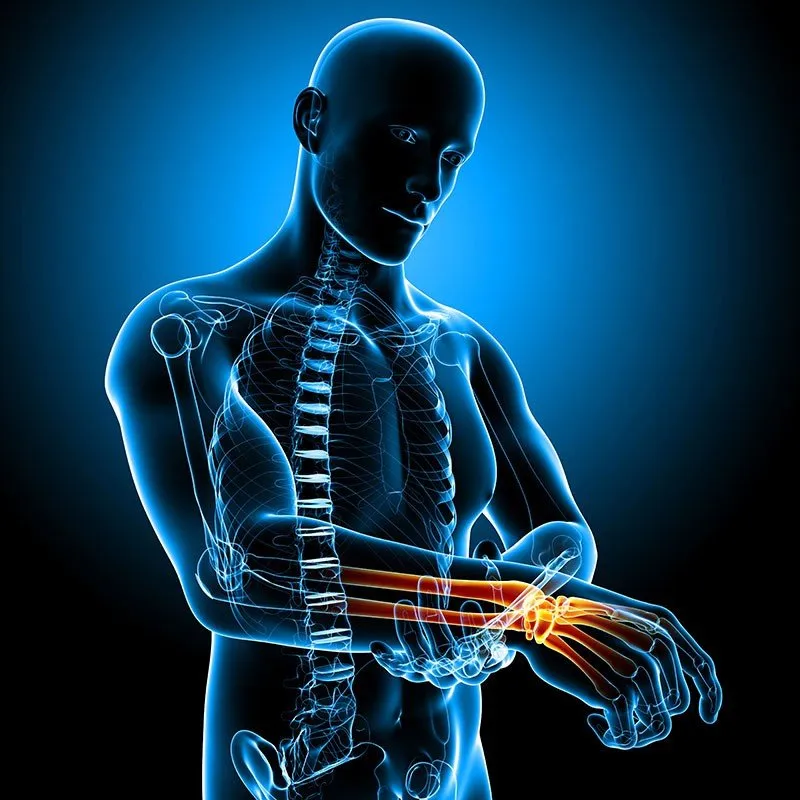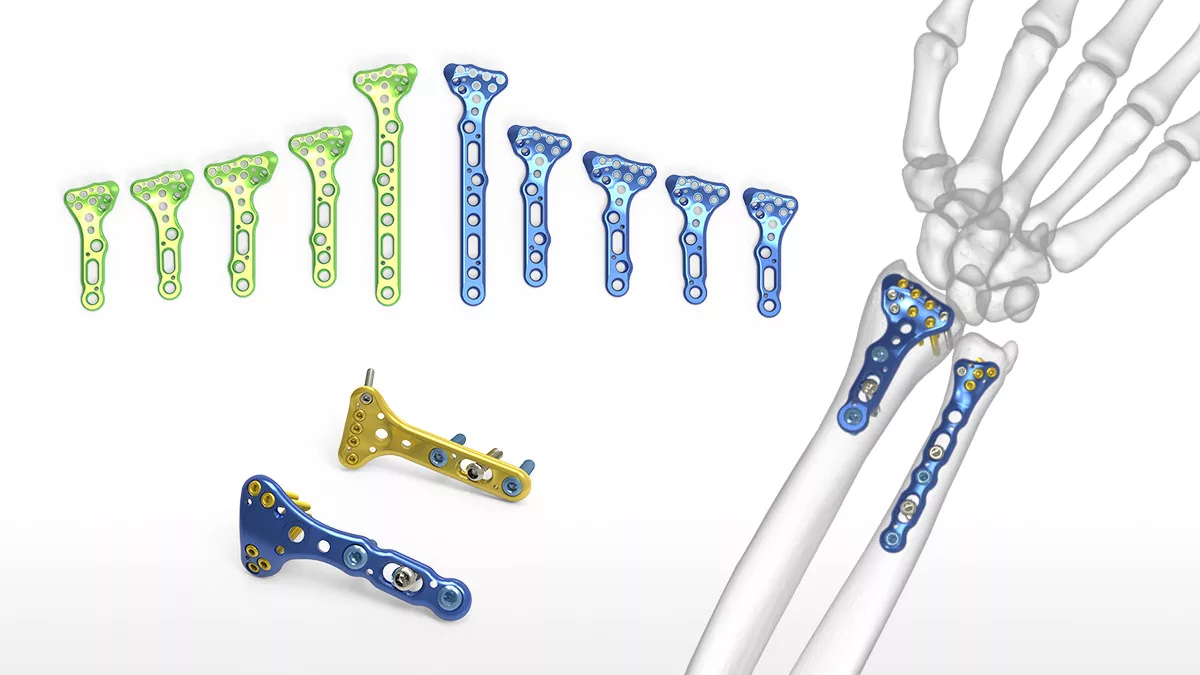 Wrist fractures can be extremely painful and incapacitating, impairing our ability to do even the simplest of daily duties. A wrist fracture, whether due to a fall, sports-related injury, or accident, is a frequent orthopedic injury that requires fast and effective treatment for the full recovery of the injury. New orthopedic implants, such as modular hand trauma implants, LCP T plates, and Cortex Screws, have changed the way we address wrist fractures in recent years, providing patients with a speedier and more satisfactory way to recovery.
Wrist fractures can be extremely painful and incapacitating, impairing our ability to do even the simplest of daily duties. A wrist fracture, whether due to a fall, sports-related injury, or accident, is a frequent orthopedic injury that requires fast and effective treatment for the full recovery of the injury. New orthopedic implants, such as modular hand trauma implants, LCP T plates, and Cortex Screws, have changed the way we address wrist fractures in recent years, providing patients with a speedier and more satisfactory way to recovery.
Understanding Of Wrist Fracture
A broken wrist is a break or crack in any one or more of your wrist’s bones. If people try to save themselves after a fall and land hard on an outstretched hand, one of the most frequent of these types of injuries happens in the wrist.
You are more likely to break your wrist if you engage in sports such as during-line skating or snowboarding, or if you have a history of osteoporosis, which is a medical condition in which bones break down and become more fragile.
A broken wrist should be treated as soon as possible. Otherwise, the bones may not mend properly, affecting the way you are able to accomplish ordinary activities like writing or putting on a shirt. Early therapy might also help to reduce pain and stiffness.
Wrist fractures can be classified into different types, such as:
-> Colles’ Fracture
-> Scaphoid Fracture
-> Intra-Articular Fracture
The Role of Modern Implants Modern medical advancements have introduced a game-changing approach to treating wrist fractures, the use of wrist implants. These implants are designed to stabilize and align the fractured bones, allowing for a more natural and functional healing process.
Modern medical advancements have introduced a game-changing approach to treating wrist fractures, the use of wrist implants. These implants are designed to stabilize and align the fractured bones, allowing for a more natural and functional healing process.
Modular Hand Trauma Implants
Advanced implants, like for example modular hand trauma implants, have transformed the treatment of wrist fractures. These types of implants are intended to offer stability and support to shattered bones, so promoting healing. This is how they work:
Versatility
Modular implants exist in a variety of sizes and combinations, allowing doctors, including Cortex Crew members, to tailor the implant to the patient’s unique needs. This versatility comes in handy when working with complicated wrist fractures.
Stability
Implants provide stability to damaged bones, lowering the likelihood of displacement or misalignment during healing.
Minimally Invasive
Numerous operations employing modular hand trauma implants can be performed as minimally invasively as possible, which results in shorter surgical incisions as well as faster patient recovery times.
LCP T Plate Trauma Implants
Another recent implant used in the treatment of injuries to the wrist is LCP T (locking compression plate) plates. These plates have great stability and are ideal for intra-articular fractures. Here’s why they’re necessary:
Locking Mechanism
LCP T (locking compression plate) plates have a locking mechanism that secures the broken bones, lowering the likelihood of instability or non-union.
Anatomical Fit
These plates are contoured to fit the curvature of the wrist, facilitating proper alignment and recovery.
Cortex Screws
Cortex Screws are specialist screws used in orthopedic treatments, particularly the repair of wrist fractures. These screws precisely repair and stabilize shattered fragments of bone. Cortex Screws are carefully put in wrist fracture procedures to ensure that the shattered bones are held permanently together during the healing phase.
Complications
Complications from a broken wrist are uncommon, however they may include:
Ongoing stiffness, aching or disability
Stiffness, soreness, or aching in the affected area usually subsides after the bandage has been removed or surgery. However, a few others have chronic stiffness or pain. Be patient with your recuperation and consult your health care provider about possible workouts or a referral to physiotherapy or occupational therapy.
Osteoarthritis
Fractures that enter a joint can lead to osteoarthritis years later. If your wrist continues to pain or bulge after a break, consult an orthopedic surgeon.
Nerve or blood vessel damage
Wrist trauma can cause nerve and blood vessel damage. If you suffer numbness or bleeding issues, get emergency medical attention.
The Road to Recovery
Diagnosis
Your orthopedic specialist will evaluate the nature and severity of the fracture after a complete evaluation that includes imaging procedures such as X-rays or CT scans.
Surgery
Surgery may be required depending on the nature of the fracture. During surgery, modern implants such as modular hand trauma implants or LCP T plates are used to fix shattered bones.
Post-Surgery Care
Patients will be informed on post-operative care after surgery, which may involve physical therapy, exercises, and immobilization with a cast or splint.
Rehabilitation
It aids in the improvement of wrist strength, range of motion, and functionality. Your therapist will create a treatment plan that is tailored to your individual needs.
Monitoring
Regular follow-up meetings with your doctor of orthopedics expert will ensure that the fracture heals properly and that any concerns are treated as soon as possible.
Return to Normal Activities
The time it takes to resume normal activities depends on the level of severity of the fracture and unique healing rates. This procedure will be guided by your doctor.
Wrapping It Up
Wrist fractures are fairly common injuries that can happen to anyone, but they are particularly common among sports, elderly people, and people with osteoarthritis. Accidents and sports-related injuries are the most common causes of wrist fractures. The length of recovery depends on the severity of the fracture, although it is usually 6-8 weeks.

